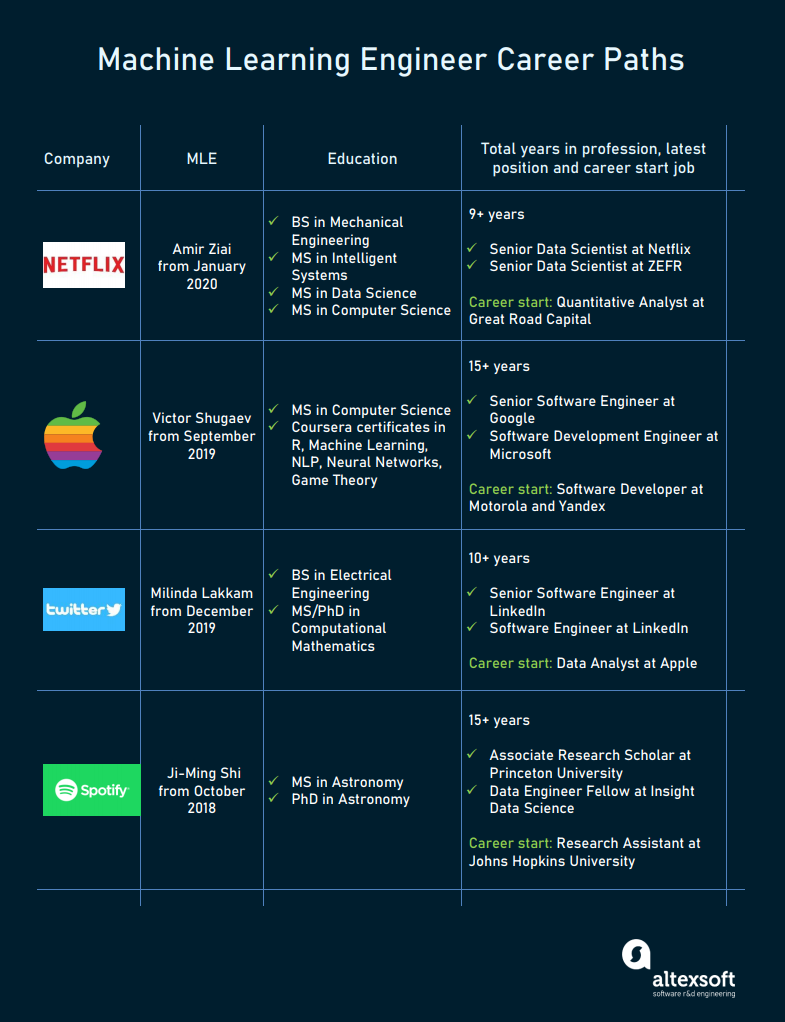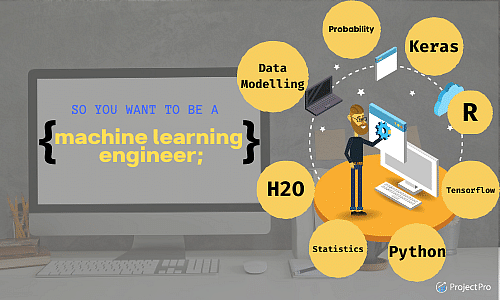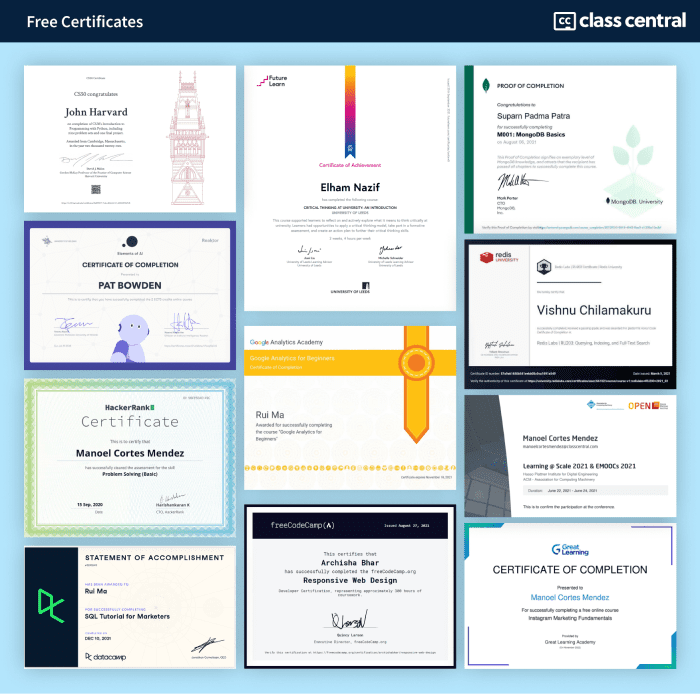All Categories
Featured
Table of Contents
- – The Ultimate Guide To Machine Learning Bootcam...
- – The Definitive Guide for How Long Does It Take...
- – How To Become A Machine Learning Engineer Wit...
- – The 10-Minute Rule for Machine Learning Engineer
- – No Code Ai And Machine Learning: Building Da...
- – 7-step Guide To Become A Machine Learning En...
You possibly know Santiago from his Twitter. On Twitter, every day, he shares a whole lot of sensible things regarding artificial intelligence. Thanks, Santiago, for joining us today. Welcome. (2:39) Santiago: Thank you for welcoming me. (3:16) Alexey: Before we enter into our main subject of moving from software program engineering to artificial intelligence, possibly we can start with your background.
I started as a software program developer. I mosted likely to college, got a computer scientific research degree, and I began building software program. I assume it was 2015 when I made a decision to choose a Master's in computer technology. At that time, I had no idea regarding artificial intelligence. I really did not have any kind of passion in it.
I understand you have actually been utilizing the term "transitioning from software engineering to equipment discovering". I such as the term "including to my capability the maker learning abilities" more since I think if you're a software application designer, you are already offering a lot of worth. By including artificial intelligence now, you're enhancing the effect that you can carry the market.
Alexey: This comes back to one of your tweets or perhaps it was from your course when you compare two techniques to learning. In this case, it was some issue from Kaggle concerning this Titanic dataset, and you just find out just how to solve this problem making use of a certain tool, like choice trees from SciKit Learn.
The Ultimate Guide To Machine Learning Bootcamp: Build An Ml Portfolio
You first find out mathematics, or direct algebra, calculus. After that when you understand the math, you go to artificial intelligence theory and you find out the concept. Then 4 years later on, you ultimately come to applications, "Okay, how do I utilize all these four years of math to fix this Titanic trouble?" Right? So in the former, you sort of conserve yourself a long time, I assume.
If I have an electrical outlet here that I need changing, I do not wish to go to college, spend 4 years recognizing the math behind power and the physics and all of that, just to alter an electrical outlet. I would rather begin with the electrical outlet and find a YouTube video that assists me go via the issue.
Santiago: I actually like the idea of starting with a trouble, trying to throw out what I know up to that trouble and understand why it does not function. Get hold of the devices that I require to solve that issue and begin excavating much deeper and much deeper and deeper from that point on.
Alexey: Maybe we can chat a bit concerning finding out sources. You pointed out in Kaggle there is an intro tutorial, where you can obtain and find out just how to make decision trees.
The only demand for that training course is that you understand a little bit of Python. If you go to my account, the tweet that's going to be on the top, the one that claims "pinned tweet".
The Definitive Guide for How Long Does It Take To Learn “Machine Learning” From A ...

Even if you're not a designer, you can begin with Python and function your way to even more artificial intelligence. This roadmap is concentrated on Coursera, which is a platform that I really, really like. You can examine all of the programs for complimentary or you can spend for the Coursera membership to obtain certificates if you intend to.
Alexey: This comes back to one of your tweets or maybe it was from your course when you contrast 2 methods to discovering. In this instance, it was some issue from Kaggle regarding this Titanic dataset, and you just learn just how to resolve this problem making use of a details tool, like choice trees from SciKit Learn.

You first discover math, or straight algebra, calculus. When you recognize the math, you go to device learning theory and you discover the theory.
If I have an electric outlet here that I require changing, I don't wish to go to university, invest 4 years understanding the math behind electrical power and the physics and all of that, just to alter an electrical outlet. I would certainly rather begin with the electrical outlet and discover a YouTube video that aids me experience the issue.
Bad analogy. But you understand, right? (27:22) Santiago: I actually like the concept of starting with a trouble, attempting to toss out what I understand as much as that issue and recognize why it doesn't work. Order the devices that I require to solve that issue and start excavating much deeper and deeper and deeper from that factor on.
Alexey: Possibly we can talk a little bit concerning finding out sources. You stated in Kaggle there is an intro tutorial, where you can get and discover how to make choice trees.
How To Become A Machine Learning Engineer Without ... - The Facts
The only demand for that program is that you know a little bit of Python. If you go to my profile, the tweet that's going to be on the top, the one that states "pinned tweet".
Also if you're not a programmer, you can begin with Python and function your means to more artificial intelligence. This roadmap is focused on Coursera, which is a system that I truly, truly like. You can investigate all of the courses for free or you can spend for the Coursera registration to get certificates if you intend to.
The 10-Minute Rule for Machine Learning Engineer
Alexey: This comes back to one of your tweets or maybe it was from your course when you contrast two strategies to understanding. In this situation, it was some trouble from Kaggle concerning this Titanic dataset, and you just learn exactly how to fix this trouble making use of a specific tool, like decision trees from SciKit Learn.

You initially learn math, or straight algebra, calculus. When you understand the mathematics, you go to device learning theory and you learn the theory.
If I have an electrical outlet below that I require replacing, I do not wish to most likely to university, invest 4 years understanding the mathematics behind electrical energy and the physics and all of that, just to transform an outlet. I would instead begin with the outlet and locate a YouTube video clip that aids me go via the issue.
Santiago: I really like the idea of starting with a problem, trying to toss out what I know up to that issue and comprehend why it doesn't work. Order the devices that I require to resolve that trouble and start excavating much deeper and deeper and deeper from that point on.
Alexey: Maybe we can chat a bit concerning discovering sources. You mentioned in Kaggle there is an intro tutorial, where you can get and find out how to make choice trees.
No Code Ai And Machine Learning: Building Data Science ... - An Overview
The only demand for that course is that you know a little bit of Python. If you go to my account, the tweet that's going to be on the top, the one that claims "pinned tweet".
Also if you're not a programmer, you can start with Python and work your means to even more maker discovering. This roadmap is concentrated on Coursera, which is a system that I truly, truly like. You can investigate every one of the training courses free of charge or you can pay for the Coursera registration to obtain certificates if you wish to.
That's what I would do. Alexey: This comes back to one of your tweets or maybe it was from your program when you contrast two strategies to understanding. One strategy is the issue based strategy, which you just spoke about. You discover a problem. In this case, it was some problem from Kaggle regarding this Titanic dataset, and you just learn exactly how to fix this problem using a certain tool, like choice trees from SciKit Learn.
You initially discover math, or straight algebra, calculus. When you recognize the math, you go to machine discovering concept and you learn the concept.
7-step Guide To Become A Machine Learning Engineer In ... - Truths
If I have an electric outlet right here that I need replacing, I do not wish to most likely to university, spend 4 years recognizing the math behind electrical power and the physics and all of that, simply to change an electrical outlet. I would rather start with the outlet and find a YouTube video clip that assists me go with the trouble.
Negative example. However you understand, right? (27:22) Santiago: I really like the idea of starting with a trouble, trying to throw away what I understand up to that issue and understand why it does not function. After that order the devices that I need to resolve that trouble and begin excavating much deeper and much deeper and deeper from that point on.

That's what I normally recommend. Alexey: Maybe we can chat a little bit regarding discovering sources. You pointed out in Kaggle there is an intro tutorial, where you can get and learn exactly how to choose trees. At the start, before we began this meeting, you mentioned a couple of books.
The only requirement for that training course is that you understand a bit of Python. If you're a programmer, that's a wonderful beginning factor. (38:48) Santiago: If you're not a designer, after that I do have a pin on my Twitter account. If you go to my profile, the tweet that's mosting likely to be on the top, the one that says "pinned tweet".
Even if you're not a programmer, you can start with Python and function your way to even more artificial intelligence. This roadmap is concentrated on Coursera, which is a system that I actually, truly like. You can audit every one of the courses completely free or you can pay for the Coursera membership to get certificates if you wish to.
Table of Contents
- – The Ultimate Guide To Machine Learning Bootcam...
- – The Definitive Guide for How Long Does It Take...
- – How To Become A Machine Learning Engineer Wit...
- – The 10-Minute Rule for Machine Learning Engineer
- – No Code Ai And Machine Learning: Building Da...
- – 7-step Guide To Become A Machine Learning En...
Latest Posts
Top Software Engineering Interview Questions And How To Answer Them
How To Prepare For A Technical Software Engineer Interview At Faang
How To Prepare For A Technical Software Engineer Interview At Faang
More
Latest Posts
Top Software Engineering Interview Questions And How To Answer Them
How To Prepare For A Technical Software Engineer Interview At Faang
How To Prepare For A Technical Software Engineer Interview At Faang